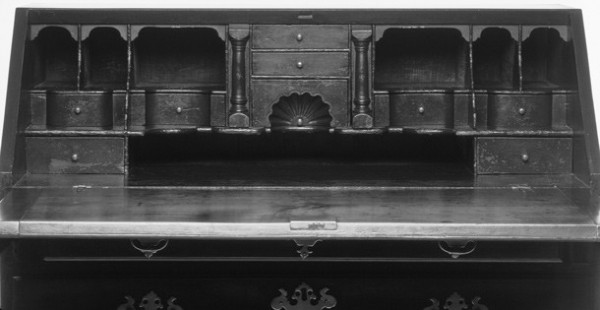
Detail of a desk interior, northeastern Massachusetts or New Hampshire, 1770–1800. Maple with white pine. H. 41 3/8", W. 37 1/4" (feet), D. 20 1/4" (at feet). (Courtesy, Winterthur Museum, bequest of Henry Francis du Pont, acc. 58.2224.)
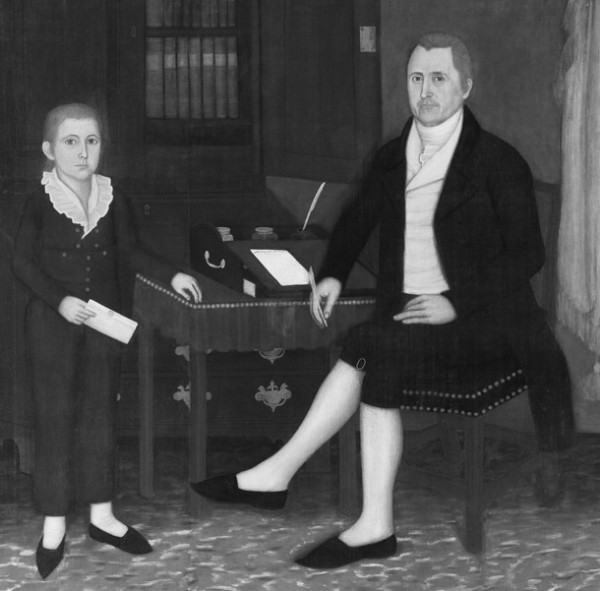
John Brewster Jr., James Prince and Son, William Henry, 1801. Oil on canvas. 60 3/8" x 60 1/2". (Courtesy, Historical Society of Old Newbury, Newburyport, Massachusetts, gift of William Andrews Currier.)
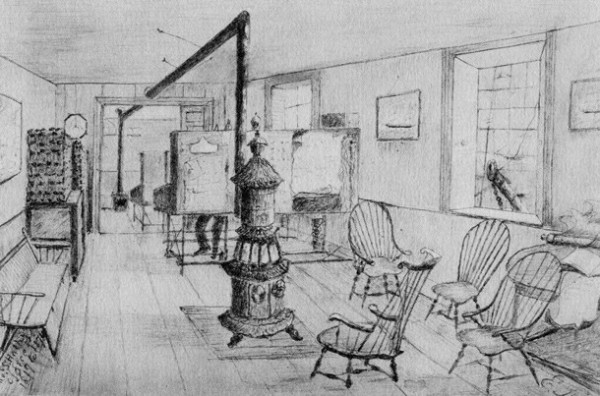
Edward S. Russell, Office of Humphrey Hathaway, at the Head of Rotch’s Wharf, New Bedford, Massachusetts, 1819–1873. Pencil sketch, as published in Horatio Hathaway, A New Bedford Merchant (Boston: privately printed at Merymount Press, 1930). (Anonymous collection © The New Bedford Whaling Museum.) In this scene writing desks are depicted in the middle ground and background.

William Appleton, secretary-and-bookcase, Salem, Massachusetts, 1795–1804. Mahogany and mahogany veneer with white pine, ebony, and holly. H. 97 1/2" (finial), W. 43 1/4", D. 24 3/8". (Courtesy, Winterthur Museum, museum purchase with funds provided by Lammot du Pont Copeland, acc. 53.57.)
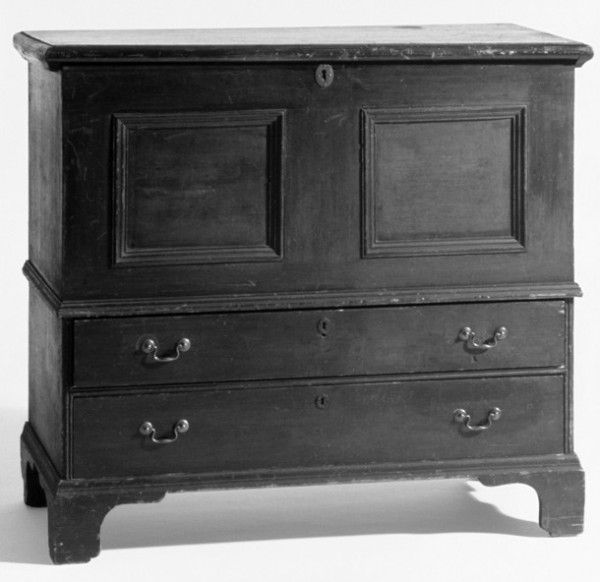
Chest with lid, Nassau County, Long Island, New York, 1770–1800. Pine with brass and iron. H. 38 1/4", W. 41 3/4", D. 19 3/4". (Courtesy, Winterthur Museum, acc. 70.440.)
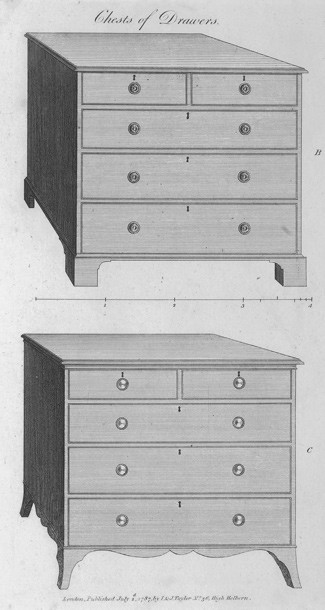
Designs for chests of drawers illustrated in pl. 52 in George Hepplewhite, Cabinet-Maker and Upholsterer’s Guide, 3rd ed. (London, 1794). (Courtesy, Winterthur Library, Printed Book and Periodical Collection.) The date on the engraved plate is 1787.
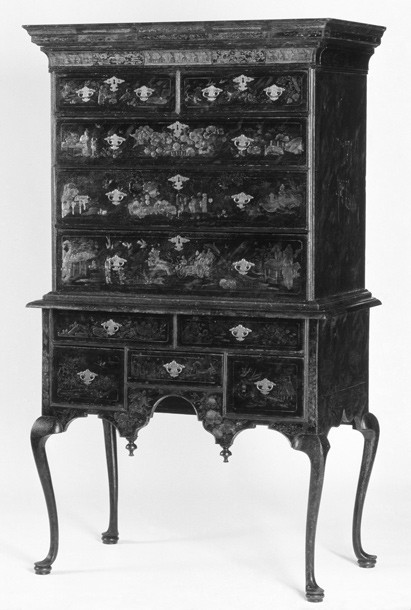
High chest of drawers, Boston, Massachusetts, 1730–1750. Maple with ash, white pine, and yellow poplar. H. 69 3/8", W. 40 1/2" (at cornice), D. 22 11/16" (at feet). (Courtesy, Winterthur Museum, bequest of Henry Francis du Pont, acc. 52.255.)
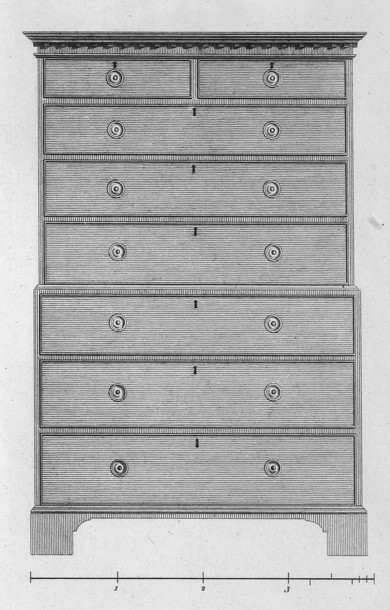
Design for a double chest of drawers (chest-on-chest) illustrated in pl. 53 in George Hepplewhite, Cabinet-Maker and Upholsterer’s Guide, 3rd ed. (London, 1794). (Courtesy, Winterthur Library, Printed Book and Periodical Collection.) The date on the engraved plate is 1787.
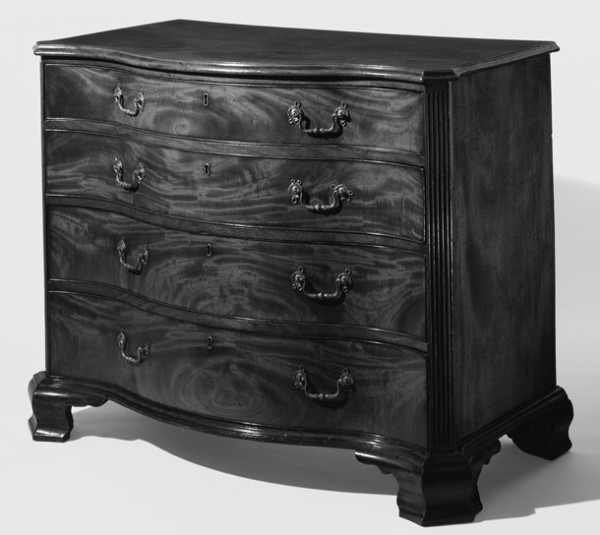
Bureau, attributed to Jonathan Gostelowe, Philadelphia, Pennsylvania, 1780–1793. Mahogany with yellow poplar and pine. H. 36", W. 47 1/4", D. 26 5/8". (Courtesy, Winterthur Museum, bequest of Henry Francis du Pont, acc. 59.631.)
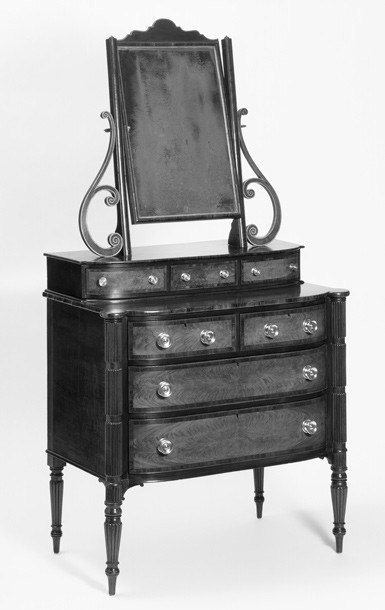
Levi Ruggles, bureau, Boston, Massachusetts, 1813–1816. Mahogany, mahogany veneer, and birch veneer with pine, glass, brass, and copper. H. 75", W. 38 1/2", D. 23 1/4". (Courtesy, Winterthur Museum, bequest of Henry Francis du Pont, acc. 57.567.)

Closed rectangular cupboard, Berks County, Pennsylvania, 1775–1800. Yellow poplar, maple, and pine with glass and brass. H. 84 1/2", W. 78" (at cornice), D. 19" (at top of lower case). (Courtesy, Winterthur Museum, bequest of Henry Francis du Pont, acc. 64.1895.)
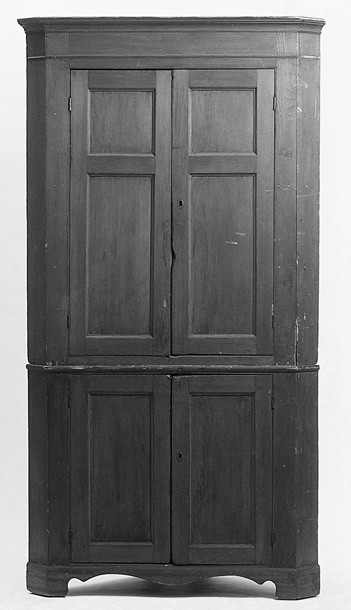
Corner cupboard, Pennsylvania, 1790–1830. Pine and yellow poplar. H. 84", W. 44 1/2", D. 22 1/2". (Courtesy, Winterthur Museum, gift of Mr. and Mrs. Henry Pleasants, acc. 94.11.)
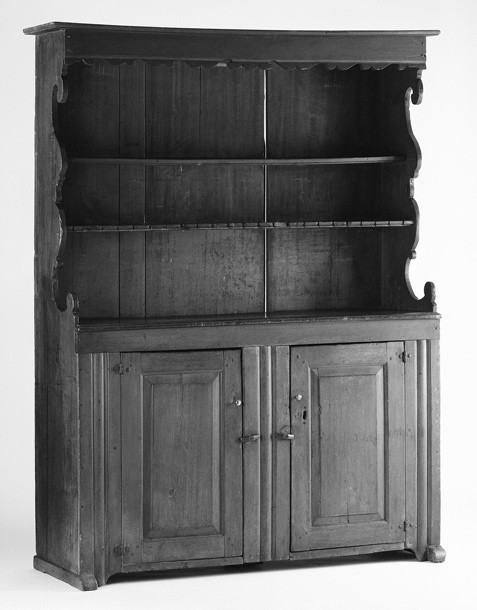
Dresser, or open rectangular cupboard, Pennsylvania, 1750–1800. American black walnut with yellow poplar. H. 811/4", W. 62 3/4", D. 21 1/8" (feet). (Courtesy, Winterthur Museum, bequest of Henry Francis du Pont, acc. 65.2750.) The cupboard turns, or turn buckles, are replacements.
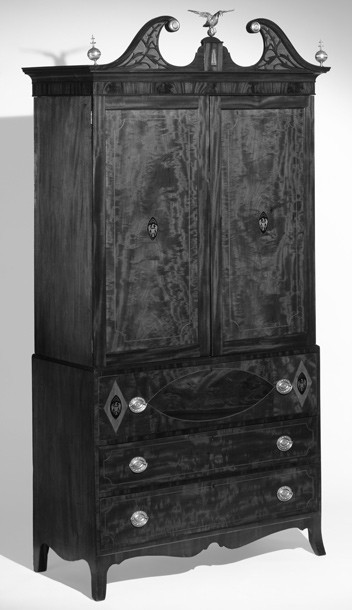
Clothespress, attributed to Michael Allison, New York City, 1800–1815. Mahogany, mahogany veneer, and satinwood veneer with yellow poplar, white pine, and brass. H. 99 3/4" (finial), W. 52 1/2" (cornice), D. 24" (cornice). (Courtesy, Winterthur Museum, bequest of Henry Francis du Pont, acc. 57.921.)

Design for a sideboard illustrated in pl. 29 in George Hepplewhite, Cabinet-Maker and Upholsterer’s Guide, 3rd ed. (London, 1794). (Courtesy, Winterthur Library, Printed Book and Periodical Collection.) The date on the engraved plate is 1787.

Nathaniel Dominy V, tall clock case with movement by Nathaniel Dominy IV, East Hampton, Long Island, New York, 1799. Mahogany with white pine and cherry. H. 92", W. 17" (cornice), D. 9" (cornice). (Courtesy, Winterthur Museum, acc. 57.34.1.)

Elisha Tucker, looking glass, Boston, Massachusetts, 1815. Mahogany with white pine and glass. H. 17 1/2", W. 11 1/2", D. 5/8". (Courtesy, Winterthur Museum, acc. 55.92.1.)

Trade card of Robert Kennedy, engraved by James Smither, Philadelphia, Pennsylvania, 1765–1770. Printed laid paper. 10 3/8" x W. 8 3/8". (Courtesy, Winterthur Museum, acc. 60.729.)
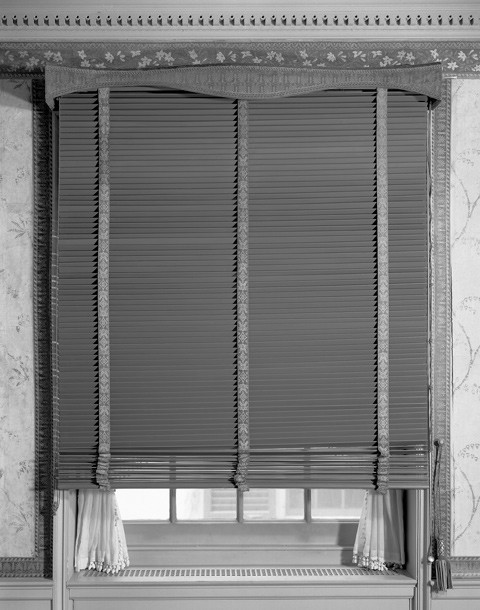
Venetian blind, Philadelphia, Pennsylvania, 1791–1810. Cherry with pine, cotton, and silk. L. 70 5/8", W. 52 1/2". (Courtesy, Winterthur Museum, bequest of Henry Francis du Pont, acc. 67.557.1.)
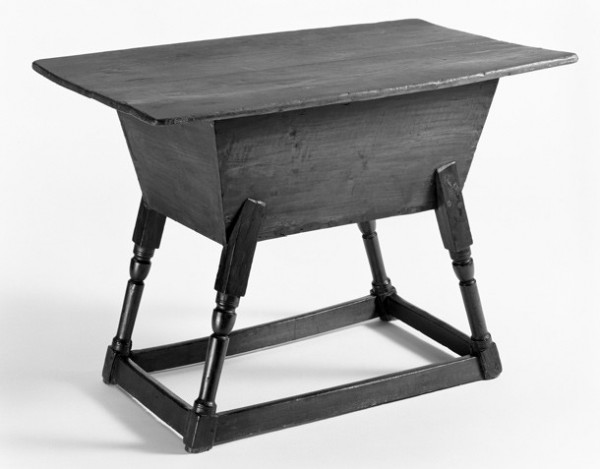
Bread trough or dough tray, probably Pennsylvania or the South, 1750–1825. Walnut. H. 25 7/8", W. 38 1/8" (top), D. 22 3/8" (top). (Courtesy, Winterthur Museum, bequest of Henry Francis du Pont, acc. 65.2748.)
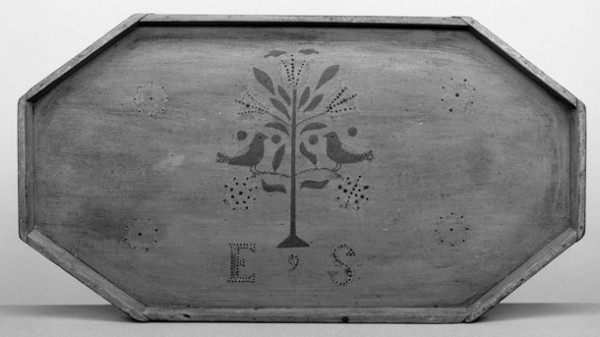
Tray, United States, 1800–1850. Wood. L. 19 7/8", W. 10 13/16". (Courtesy, Winterthur Museum, bequest of Henry Francis du Pont, acc. 67.719.)
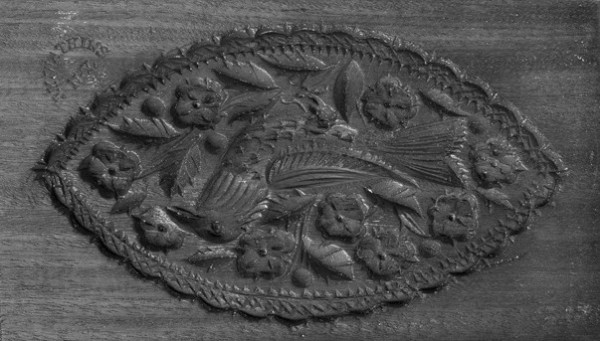
John Conger (carver), gingerbread board or mold, retailed by James Y. Watkins, New York City, 1830–1835. Mahogany. H. 15/16", W. 7 1/8", D. 4 1/8". (Courtesy, Winterthur Museum, bequest of Henry Francis du Pont, acc. 61.1704.)

Pail, possibly Shaker community of Mount Lebanon, New York, 1850–1900. White pine with iron. H. 71/8", Diam. of top: 10 3/16". (Courtesy, Winterthur Museum, gift of Robert E. P. Hendrick, acc. 62.50.)

Lemon squeezer, United States, 1800–1900. Wood with iron. H. 15 7/8", W. 7 3/16", D. 7". (Courtesy, Winterthur Museum, bequest of Henry Francis du Pont, acc. 65.2102.)
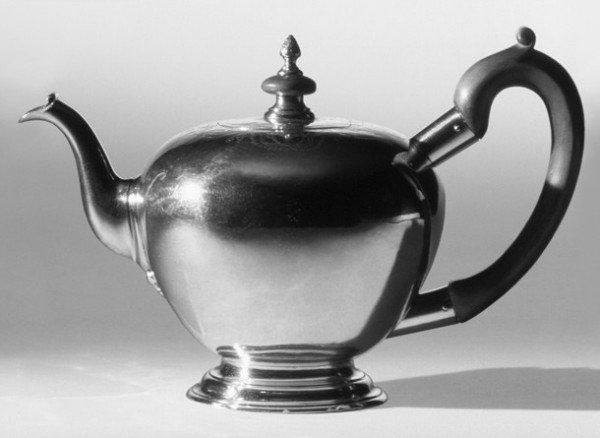
Jacob Hurd, teapot, Boston, Massachusetts, ca. 1750. Silver with fruitwood. H. 6 1/8", W. 9 5/16". (Courtesy, Winterthur Museum, gift of Henry Francis du Pont, acc. 61.937.)
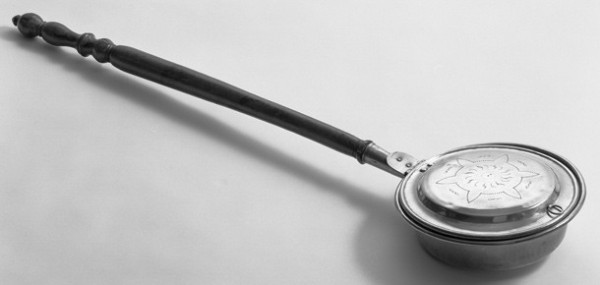
Warming pan, attributed to William C. Hunneman, William C. Hunneman Jr., or Samuel H. Hunneman, Boston, Massachusetts, 1799–1825. Copper, wood, and iron. H. 3 5/8", L. 41 1/2", Diam. of pan 10 1/2". (Courtesy, Winterthur Museum, acc. 60.186.)

Fireboard, probably Massachusetts, 1790–1830. White pine. H. 30", W. 39 1/2", D. 1 1/4". (Courtesy, Winterthur Museum, bequest of Henry Francis du Pont, acc. 67.1859.)
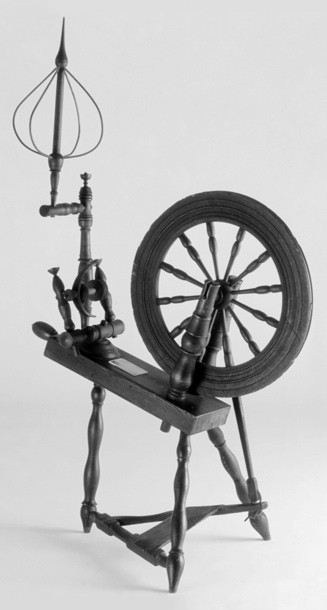
Jonathan Tyson, flax, or spinning, wheel, Philadelphia, Pennsylvania, ca. 1807–1816. Ash with maple, oak, leather, and iron. H. 51", L. 18" (table), W. 6 5/8" (table). (Courtesy, Winterthur Museum, acc. 72.163.)

John Lewis Krimmel, The Quilting Frolic, Philadelphia, Pennsylvania, 1813. Oil on canvas. 16 7/8" x 22 3/8". (Courtesy, Winterthur Museum, acc. 53.178.2.)
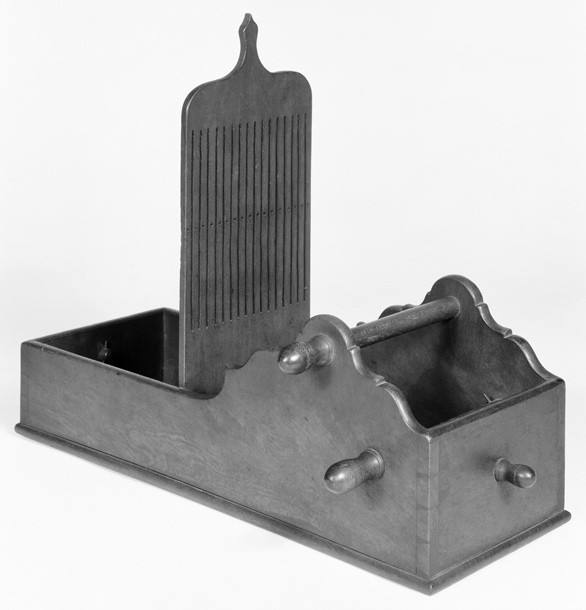
Tape loom, Boston, Massachusetts, or Philadelphia, Pennsylvania, 1760–1775. Cherry. H. 11 1/8", L. 13 1/2", D. 5 1/8". (Courtesy, Winterthur Museum, museum purchase with funds provided by Henry Francis du Pont, acc. 56.72.)

Pipebox, probably Pennsylvania or the South, 1760–1810. Walnut. H. 21 1/4", W. 5 1/4", D. 4". (Formerly in the collection of the Winterthur Museum.)
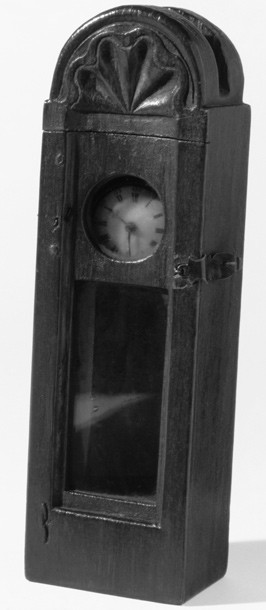
Watch case, New England, 1750–1800. Pine; glass, brass. H. 10 1/4", W. 3", D. 2 1/4". (Courtesy, Winterthur Museum, museum purchase with funds provided by Henry Francis du Pont, acc. 59.4.17.)
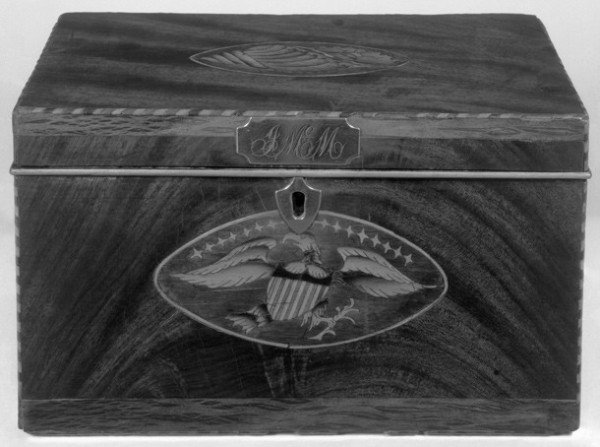
Tea chest, possibly New York City, 1790–1810. Mahogany and mahogany veneer with yellow poplar, white pine, silver, tin, and baize. H. 5 1/8", W. 8 13/16", D. 5". (Courtesy, Winterthur Museum, gift of Henry Francis du Pont, acc. 61.1690.) Silver plaque at front of lid engraved with initials “J [or I] McM.”
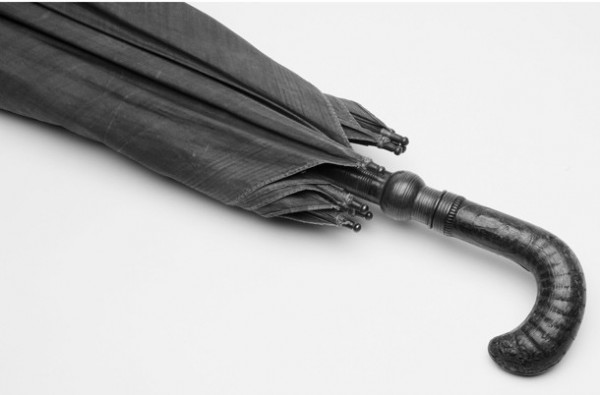
Detail of an umbrella, United States, 1800–1875. Cotton, wood, brass, and iron. L. 39". (Courtesy, Winterthur Museum, bequest of Henry Francis du Pont, acc. 58.2864.)

C. W. Wirths and Brothers, ice skates, Remscheid, Germany, ca. 1833, probably imported into Philadelphia, Pennsylvania. Wood, iron, and leather. L. 13 3/16", W. 2 9/16". (Courtesy, Winterthur Museum, bequest of Henry Francis du Pont, acc. 65.1978.1 and .2.) The Smithsonian Institution owns a related pair of skates with acorn-tipped scrolls at the front and also stamped by Wirths and Brothers. Research indicates that the Wirths Company exported 600 pairs of skates to Christian Hesser in Philadelphia on August 12, 1833. Skates of similar design are visible in Dutch and Flemish genre paintings of village life. Early Dutch and Flemish paintings of rural winter scenes with skaters illustrate similar curved-prow skates.
